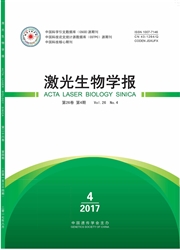

 中文摘要:
中文摘要:
水稻条纹病毒(rice stripe virus,RSV)主要由介体昆虫灰飞虱Laodelphax striatellus以循回增殖型方式经卵传播,目前RSV与灰飞虱间的互作研究很少。为了研究RSV侵染对灰飞虱基因表达的影响,采用5条随机引物和3条锚定引物,利用mRNA差异显示(differential display RT-PCR,DDRT-PCR)技术分析了带毒和无毒灰飞虱种群基因表达差异。且利用正交实验优化了DDRT-PCR反应体系中的模板浓度、锚定引物浓度、随机引物浓度、dNTPs浓度、镁离子浓度及Taq酶用量。结果表明:最佳DDRT-PCR体系(25μL)为cDNA3.0μg,随机引物2.0μmol/L,锚定引物2.5μmol/L,dNTPs200μmol/L,Mg2+2.0μmol/L,Taq酶2.0U。mRNA差异显示共获得35条差异片段,选取其中6条经RNA斑点杂交验证,获得了4条阳性差异片段。其中3条阳性片段为带毒灰飞虱种群特异表达,分别与5-羟色胺受体1D、旋转酶B、60S核蛋白L40高度同源,无毒灰飞虱种群中特异表达的一条阳性片段在NCBI核酸数据库中比对无同源序列。DDRT-PCR优化体系的建立及部分差异片段的获得为进一步研究灰飞虱与RSV间的互作提供了帮助。
 英文摘要:
英文摘要:
Rice stripe virus (RSV) is mainly transmitted by insect vector Laodelphax striatellus in circulative-propagative and transovarial manners. The interaction between RSV and L. striatellus is largely unknown. To investigate the effects of RSV on gene expression in L. striatellus,viruliferous and virus-free L. striatellus populations were detected to reveal the differentially expressed genes with five random primers and three anchor primers by differential display RT-PCR (DDRT-PCR). Furthermore,positive-cross test was performed to find optimal conditions of DDRT-PCR by analyzing six critical parameters including cDNA template,random primer,anchor primer,dNTPs,Mg2+ and Taq. The results showed that the optimal conditions of DDRT-PCR (25 μL) included cDNA template 3.0 μg,random primer 2.0 μmol/L,anchor primer 2.5 μmol/L,dNTPs 200 μmol/L,Mg2+ 2.0 μmol/L,and Taq 2.0 U. Thirty-five differentially expressed cDNA fragments were isolated by DDRT-PCR. Six of them were verified by RNA dot blot hybridization,and four positive cDNA fragments were obtained. Three positive cDNA fragments were from viruliferous L. striatellus population and shared high homology with 5-hydroxytryptamine receptor 1D gene,gyrase B gene and 60S ribosomal protein L40 gene,respectively. The positive cDNA fragment from virus-free L. striatellus population had no similarity with sequences in NCBI nucleotide databases. The optimal DDRT-PCR system and the differentially expressed cDNA fragments obtained might provide a basis for further study on interaction between RSV and L. striatellus.
 同期刊论文项目
同期刊论文项目
 同项目期刊论文
同项目期刊论文
 期刊信息
期刊信息
